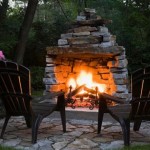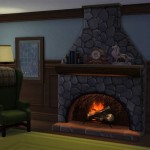Amish Fireplace: Understanding the Technology and Operation
The term "Amish fireplace" often refers to electric fireplaces encased in handcrafted wooden mantels and cabinets, typically built with traditional Amish woodworking techniques. These fireplaces are not fueled by wood or gas like traditional fireplaces. Instead, they utilize electric heating elements to generate warmth and often incorporate realistic flame effects for visual appeal. The popularity stems from their ease of installation, portability, and relatively low maintenance requirements, combined with the aesthetic appeal of Amish craftsmanship.
It is crucial to understand that the "Amish" aspect refers primarily to the quality and style of the cabinetry surrounding the electric fireplace insert, not to the fireplace technology itself. Amish communities are known for their dedication to meticulous craftsmanship, utilizing solid wood and time-tested building methods. Consequently, an "Amish fireplace" typically denotes a high-quality electric fireplace housed in a durable and aesthetically pleasing wooden structure.
To accurately comprehend how an "Amish fireplace" functions, one must consider the two primary components: the electric fireplace insert and the surrounding wooden cabinet. The electric fireplace insert provides the heat and flame effect, while the cabinet serves a decorative and functional purpose, providing a stable base and enhancing the overall aesthetic.
The Electric Fireplace Insert: Core Functionality
The electric fireplace insert is the heart of an "Amish fireplace" unit, responsible for producing both heat and the visual illusion of a real fire. These inserts operate on electricity, plugging into a standard household outlet (typically 120V in North America). The core components of an electric fireplace insert include a heating element, a fan, a light source, and a system for creating the flame effect.
Heating elements are typically either resistance coils or quartz infrared heaters. Resistance coil heaters work by passing electricity through a coil of wire with high electrical resistance. This resistance converts electrical energy into heat, which is then dissipated into the surrounding air. Quartz infrared heaters use infrared radiation to directly heat objects and people in the room. These heaters are known for their efficiency, as they don't waste energy heating the air itself. The choice of heating element affects the heating performance and energy consumption of the fireplace. Some models offer adjustable heat settings, allowing users to control the amount of heat produced.
A fan is used to circulate the warm air produced by the heating element. The fan draws cool air from the room, passes it over the heated element, and then blows the warmed air back into the room. This forced-air circulation helps to distribute the heat evenly throughout the space. The fan speed is sometimes adjustable, allowing users to control the rate of heat distribution and noise level.
The flame effect is created through a combination of light sources and reflective surfaces. Most electric fireplaces use LED lights to illuminate a rotating reflector or a translucent screen. The reflector is often shaped to resemble flickering flames, and the rotation creates the illusion of movement. More advanced models may use holographic technology or digital displays to create a more realistic and dynamic flame effect. The intensity and color of the flame effect are often adjustable, allowing users to customize the appearance of the fire.
Many electric fireplace inserts include additional features such as a thermostat, a timer, and a remote control. The thermostat allows users to set a desired room temperature, and the fireplace will automatically cycle on and off to maintain that temperature. The timer allows users to set a specific duration for the fireplace to operate, which can be useful for energy conservation. The remote control allows users to adjust the settings of the fireplace from a distance.
Amish Cabinetry: Construction and Design
The wooden cabinet surrounding the electric fireplace insert is what distinguishes an "Amish fireplace" from a standard electric fireplace. Amish craftsmanship is known for its high quality, durability, and timeless design. The cabinets are typically made from solid hardwoods such as oak, maple, cherry, or walnut, and are constructed using traditional woodworking techniques. The construction process often involves mortise-and-tenon joints, dovetail joints, and other techniques that ensure strength and longevity.
The designs of Amish fireplace cabinets vary widely, from simple and functional to ornate and decorative. Many designs incorporate traditional Amish motifs, such as simple lines, clean surfaces, and a focus on functionality. Some designs feature intricate carvings, raised panels, and other decorative elements. The finish of the cabinet is typically a durable stain or varnish that protects the wood and enhances its natural beauty.
The dimensions of the cabinet are carefully chosen to accommodate the electric fireplace insert while also providing a stable and aesthetically pleasing structure. The cabinet typically includes a mantelpiece, which provides a surface for displaying decorative items. Some cabinets also include storage compartments or shelves, which can be used to store media equipment or other items. The back of the cabinet is often open or partially open to allow for ventilation and access to the electrical connections.
The construction of the cabinet is a labor-intensive process that requires skilled craftsmanship and attention to detail. Amish woodworkers take pride in their work, and they strive to create pieces that will last for generations. The quality of the cabinet is reflected in its durability, stability, and aesthetic appeal.
Installation and Operational Considerations
One of the key advantages of an "Amish fireplace" is its ease of installation. Unlike traditional fireplaces, which require extensive construction and venting, electric fireplaces can be simply plugged into a standard electrical outlet. This makes them a convenient option for homeowners who want to add a fireplace to their home without the hassle and expense of a major renovation.
Before installing an "Amish fireplace," it is important to choose a location that is close to an electrical outlet and that provides adequate ventilation. The fireplace should be placed on a level surface and away from flammable materials such as curtains or furniture. It is also important to ensure that the electrical circuit is capable of handling the power load of the fireplace, which is typically around 1500 watts.
To operate an "Amish fireplace," simply plug it into an electrical outlet and turn it on. The fireplace will typically have a control panel or a remote control that allows users to adjust the heat settings, flame effect, and other features. It is important to follow the manufacturer's instructions for operating the fireplace safely and efficiently.
Maintenance of an "Amish fireplace" is relatively simple. The electric fireplace insert may require occasional cleaning to remove dust and debris. The wooden cabinet can be cleaned with a damp cloth and polished with a furniture polish as needed. It is important to avoid using harsh chemicals or abrasive cleaners, as these can damage the finish of the cabinet. Regular inspection of the electrical components and connections is recommended to ensure safe and reliable operation.
In summary, an "Amish fireplace" represents a combination of modern electric heating technology and traditional Amish woodworking craftsmanship. The electric fireplace insert provides the heat and flame effect, while the surrounding wooden cabinet provides a durable and aesthetically pleasing structure. The ease of installation, low maintenance requirements, and aesthetic appeal make "Amish fireplaces" a popular choice for homeowners seeking a convenient and attractive heating solution.

Are Amish Fireplace Claims A Bunch Of Hot Air

Roll N Glow Tale Of An Amish Space Heater The New York Times

ᑕ❶ᑐ Amish Fireplace Heaters Why American Made Decor Is Important

How Miraculous Is The Amish Fireplace

Roll N Glow Tale Of An Amish Space Heater The New York Times

10 Questions About Amish Fireplaces Timber To Table
Everything You Wanted To Know About Amish Heaters Ad Age

How Does The Amish Fireplace Work Heating Guide Baskets

10 Questions About Amish Fireplaces Timber To Table

The Surprisingly Expensive Amish Fan Heater How To Spot A Psychopath








